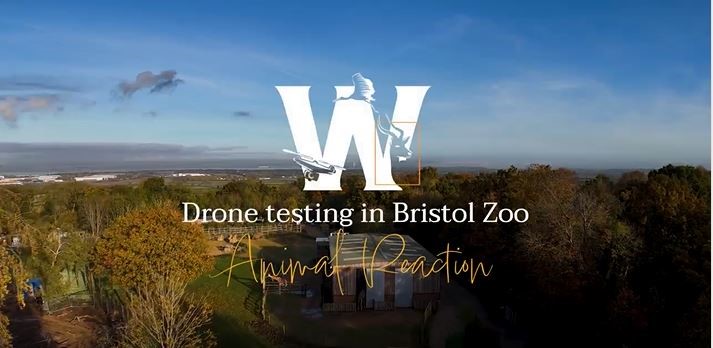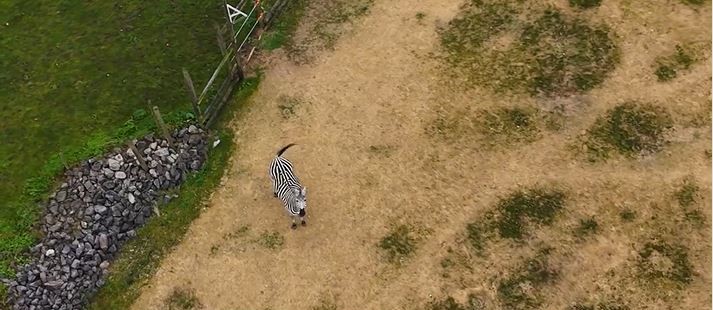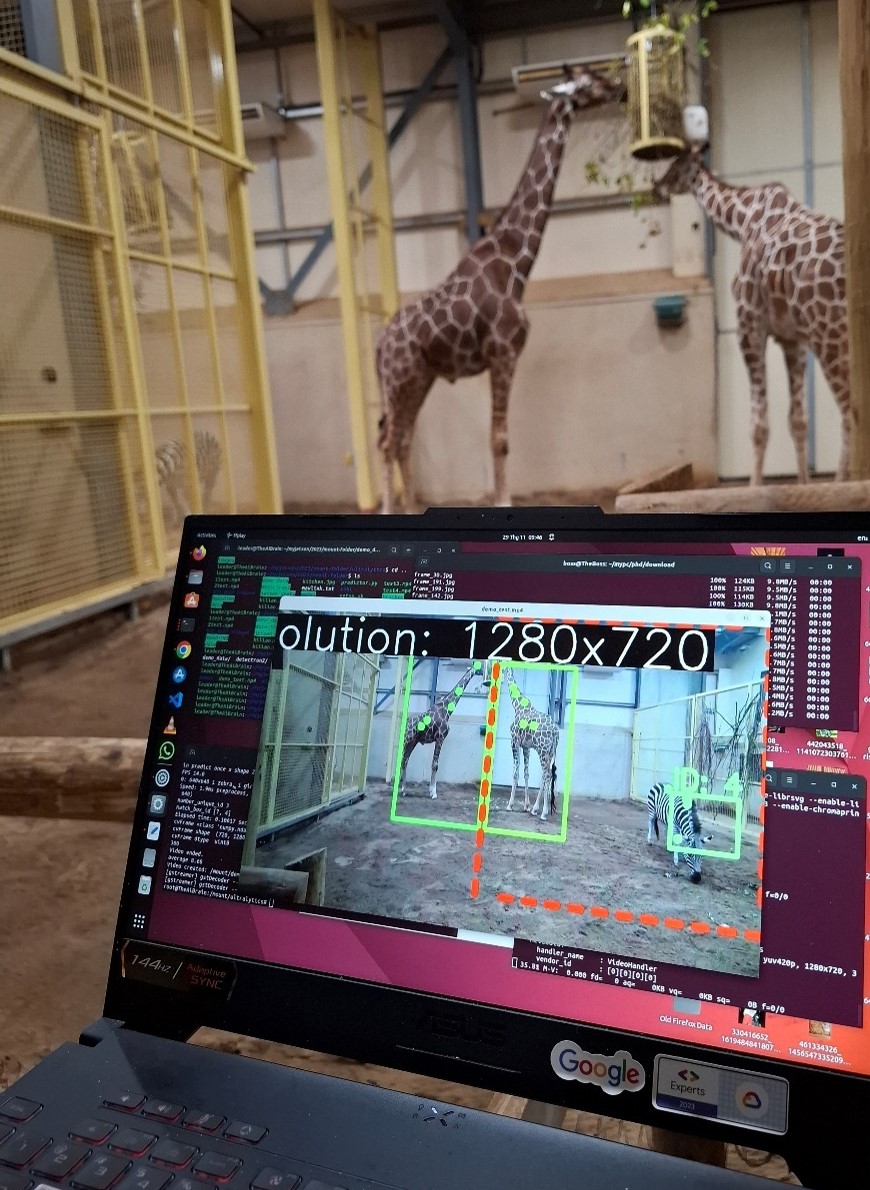
Bristol Zoo Project animals part of new WildDrone research
Posted on: 27 January, 2025
WildDrone is an international training network on a mission to transform wildlife conservation, and we are delighted to have been involved in their most recent research at Bristol Zoological Society.
The purpose of WildDrone is to combine the research areas of aerial robotics, computer identification, and wildlife ecology, by using drone technology to monitor wildlife, including their populations, movements, and potential conflicts with humans. This collaboration in science and technology is a crucial step forward in developing wildlife monitoring techniques that could have a huge impact on the future of wildlife conservation.
There is currently very little information regarding the direct effects of drones on animals. Previous studies have revealed that flying drones around animals can result in behaviour changes and increased heart rates, indicating stress. This registered and approved research is part of a project to develop drone equipment that is safe and non-invasive to wildlife.
 In research led by PhD student Saadia Afridi from Avy, as part of the WildDrone project, a team conducted disturbance testing with our animals, such as giraffes and zebras, to assess their responses to drone flights. The trial here at Bristol Zoo Project was a testing phase to lay foundations and prepare equipment for the next stage of their research at the Ol Pejeta Conservancy in Kenya at the beginning of 2025.
In research led by PhD student Saadia Afridi from Avy, as part of the WildDrone project, a team conducted disturbance testing with our animals, such as giraffes and zebras, to assess their responses to drone flights. The trial here at Bristol Zoo Project was a testing phase to lay foundations and prepare equipment for the next stage of their research at the Ol Pejeta Conservancy in Kenya at the beginning of 2025.
 The results showed that our giraffes and zebras displayed minimal reaction to the presence of drones flying at a 20-metre altitude, however, one hypothesis for this lack of response is the animals' familiarisation with the constant activity within the zoo environment. Understanding these behaviours is essential for the future of the research and use of the technologies in diverse settings.
The results showed that our giraffes and zebras displayed minimal reaction to the presence of drones flying at a 20-metre altitude, however, one hypothesis for this lack of response is the animals' familiarisation with the constant activity within the zoo environment. Understanding these behaviours is essential for the future of the research and use of the technologies in diverse settings.
 Photo caption: Saadia Afridi along with University of Bristol’s Mahdi Azarpeyvand, Bahadir Kocer, Esmaeel Masoudi, and Ziang Zhao with Bristol Zoological Society’s Gethin Pugh and Sam Penny.
Photo caption: Saadia Afridi along with University of Bristol’s Mahdi Azarpeyvand, Bahadir Kocer, Esmaeel Masoudi, and Ziang Zhao with Bristol Zoological Society’s Gethin Pugh and Sam Penny.
In a related study, Dat Nguyen, a WildDrone PhD student from the University of Bristol, has been investigating how advances in computer vision and artificial intelligence can be utilised for the detection and identification of animals. His research will allow drones to automatically identify previously sighted animals and track them in real-time. His recent visit to Bristol Zoo Project was a chance for him to trial whether his new computing platform could reliably detect animals in preparation for its use in the wild this year.
 Photo caption: University of Bristol student, Dat Nguyen, was at the zoo to test and modify his automated animal tracking tool.
Photo caption: University of Bristol student, Dat Nguyen, was at the zoo to test and modify his automated animal tracking tool.
The next step of the research in Kenya will explore animal responses in a natural habitat as they focus on adjusting drone frequencies to reduce noise and enhance data collection, as well as wildlife monitoring. This links to a key development in their research of “calm drones” and “adaptive tracking” with a goal to ensure that technology does not interfere with animal behaviours or initiate any unwanted stress.
Bristol Zoological Society is a wildlife conservation and education charity highlighting the importance of protecting species under threat around the world. The animals that call Bristol Zoo Project home are important, not just for education and crucial breeding programmes, but aiding with conservation work, as well as cutting-edge research, acting as ambassadors for their relatives in the wild.
The collaboration of innovative conservationists and trailblazing researchers on projects such as this with WildDrone, Avy, the University of Bristol, and the Society is imperative for the future of Saving Wildlife Together.

Want to help us save wildlife?
Become a member today for a year of wild adventure, and help protect the animals and habitats you love by supporting our conservation charity.

